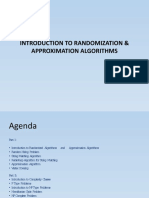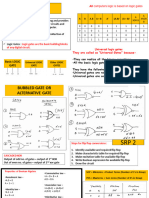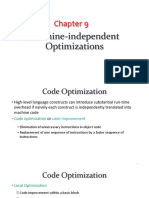0% found this document useful (0 votes)
353 views55 pagesIT257 DAA Approximation Algorithms
The document discusses approximation algorithms for NP-hard problems. It introduces brute force algorithms, heuristics, and approximation algorithms as approaches for coping with NP-hard problems. It then provides examples of approximation algorithms for the vertex cover problem, traveling salesperson problem (TSP), and bin packing problem. For each problem, it describes the approximation algorithm, proves its approximation ratio bound, and summarizes its output quality guarantee.
Uploaded by
Simhadri SevithaCopyright
© © All Rights Reserved
We take content rights seriously. If you suspect this is your content, claim it here.
Available Formats
Download as PDF, TXT or read online on Scribd
0% found this document useful (0 votes)
353 views55 pagesIT257 DAA Approximation Algorithms
The document discusses approximation algorithms for NP-hard problems. It introduces brute force algorithms, heuristics, and approximation algorithms as approaches for coping with NP-hard problems. It then provides examples of approximation algorithms for the vertex cover problem, traveling salesperson problem (TSP), and bin packing problem. For each problem, it describes the approximation algorithm, proves its approximation ratio bound, and summarizes its output quality guarantee.
Uploaded by
Simhadri SevithaCopyright
© © All Rights Reserved
We take content rights seriously. If you suspect this is your content, claim it here.
Available Formats
Download as PDF, TXT or read online on Scribd
/ 55





































































































